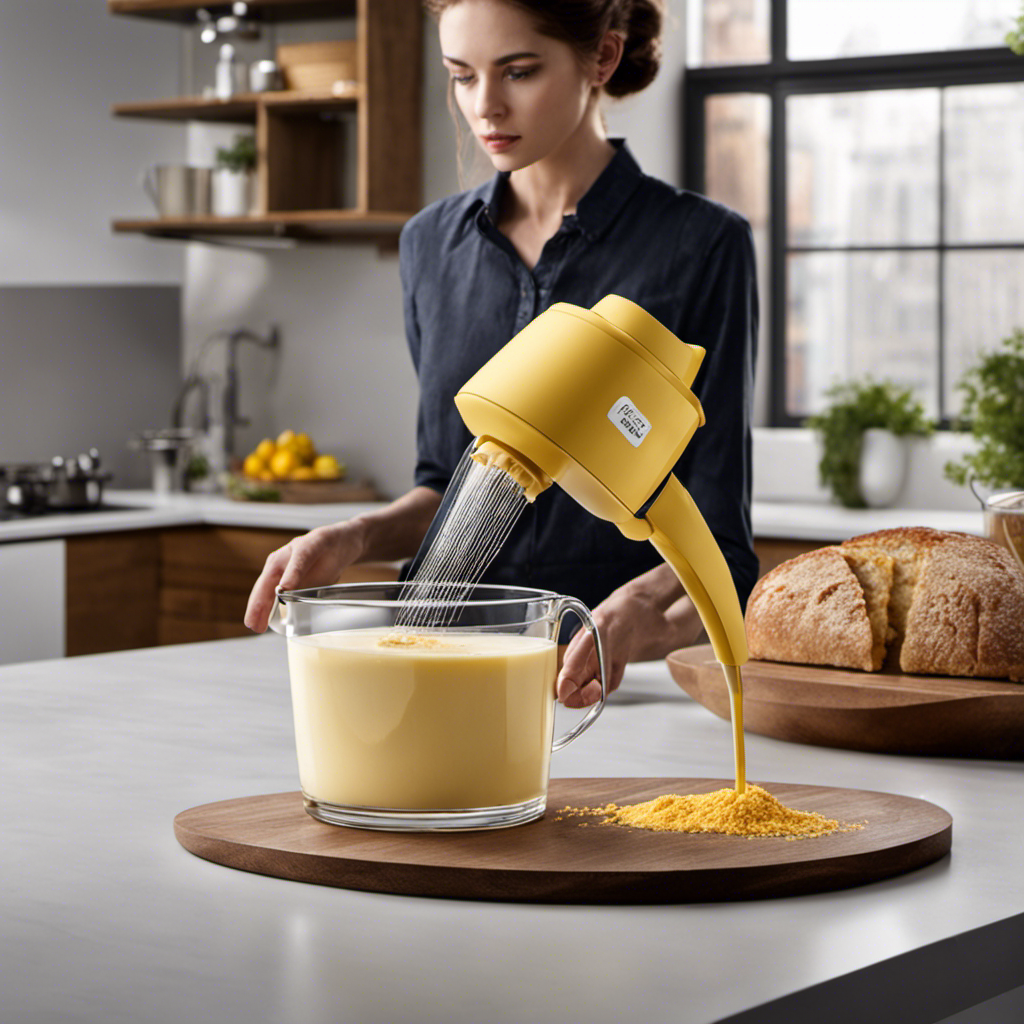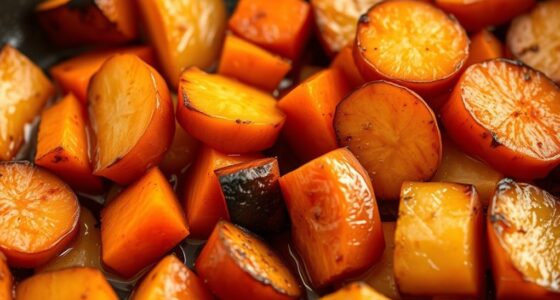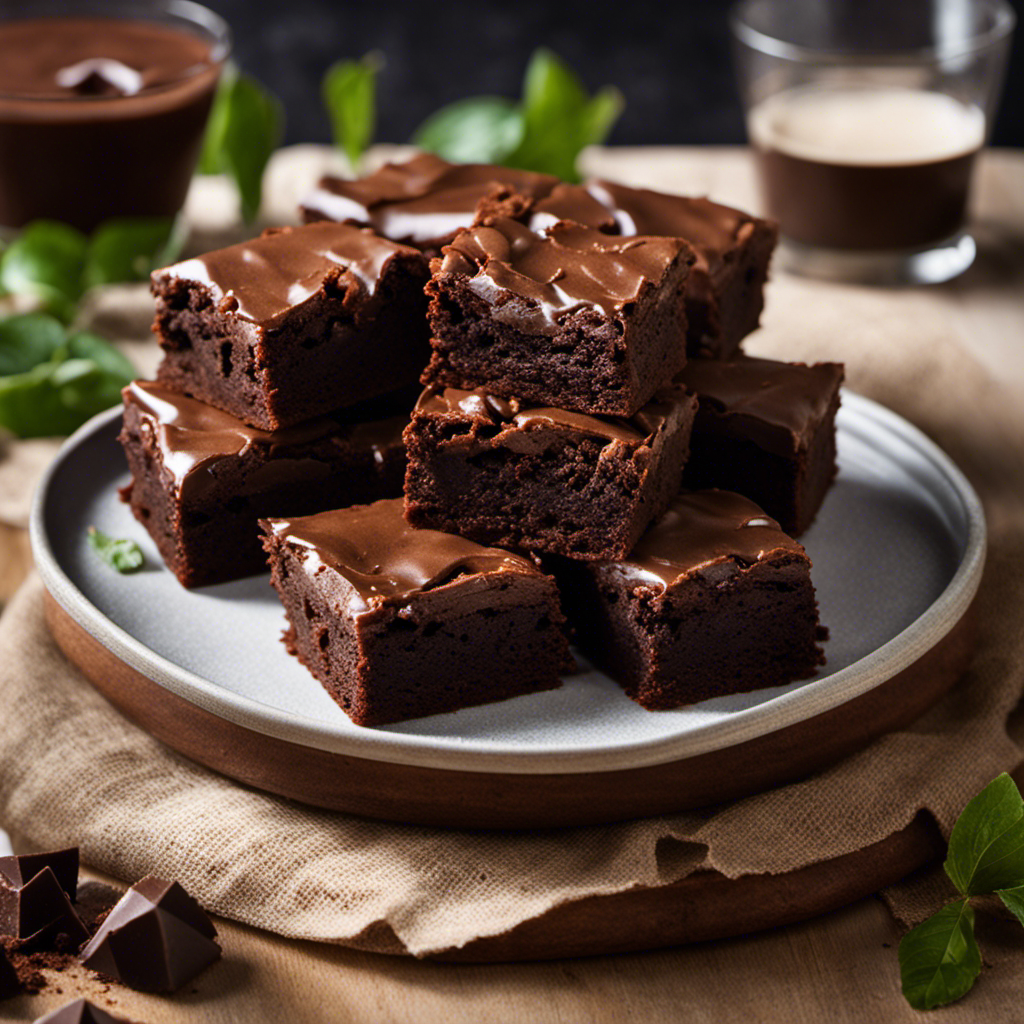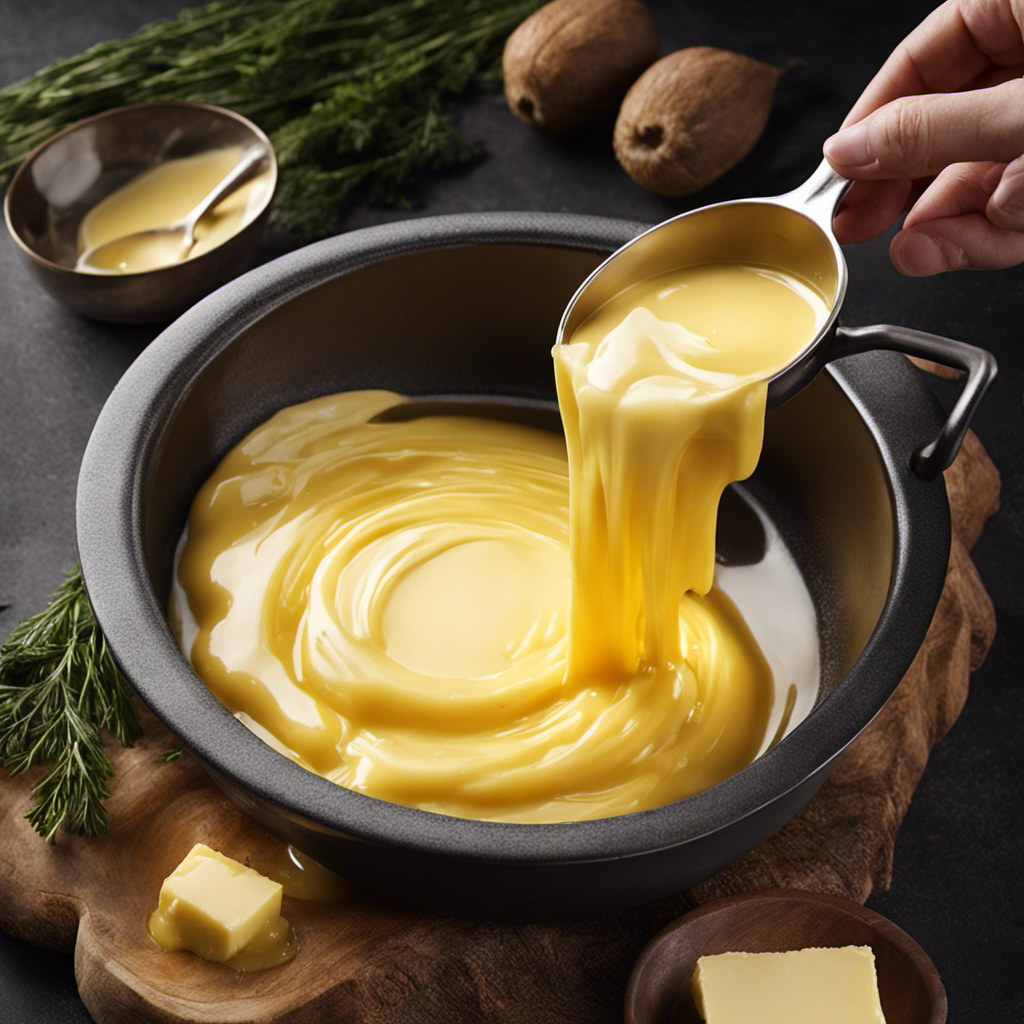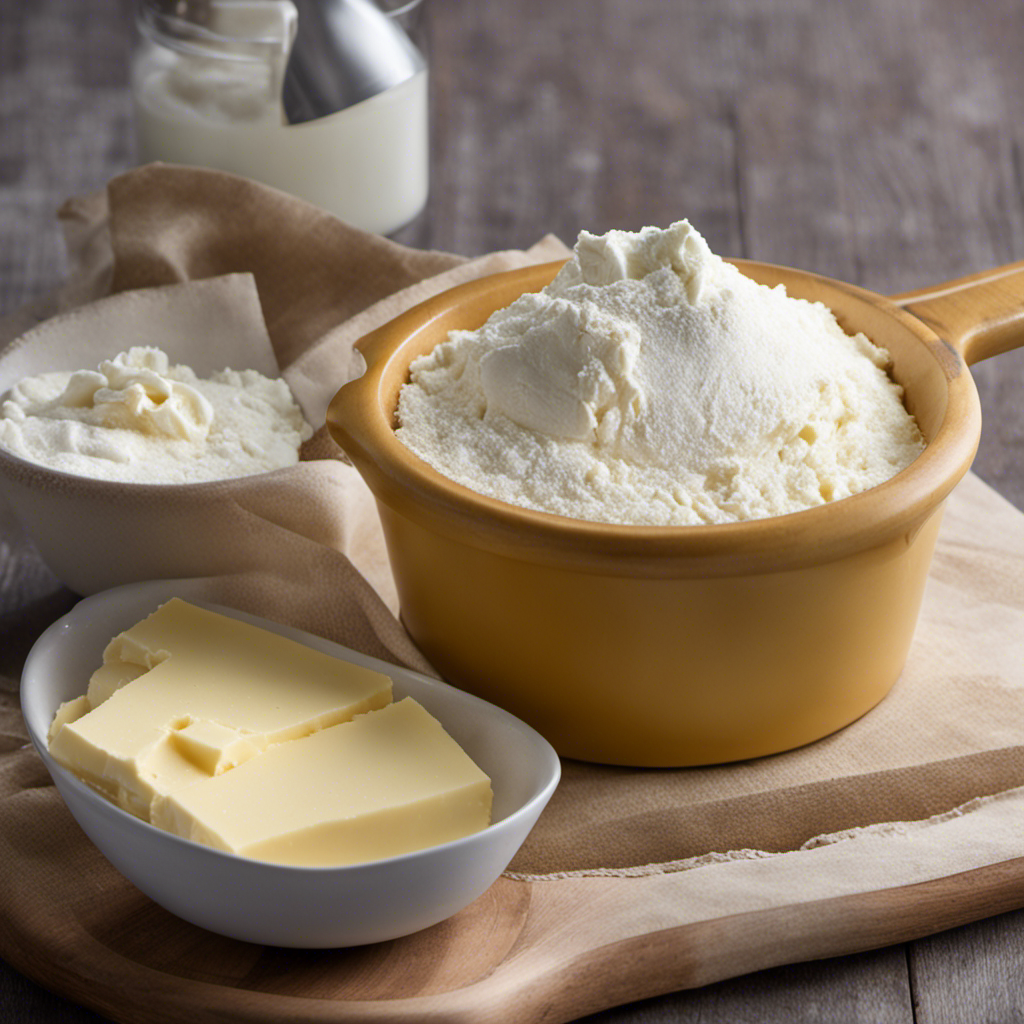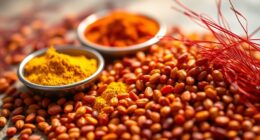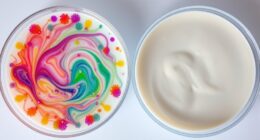As a food enthusiast, I distinctly remember the excitement surrounding the Biem Butter Sprayer. This cutting-edge device pledged to transform the butter spreading process with its modern design and user-friendly features.
However, what began as a promising invention soon descended into controversy and legal battles. The once-thriving market for the Biem Butter Sprayer mysteriously vanished, leaving disappointed customers and unanswered questions.
In this article, we will delve into the rise and fall of this culinary marvel, exploring the reasons behind its disappearance and its lasting impact on the industry.
Key Takeaways
- The Biem butter sprayer faced consumer dissatisfaction and declining sales due to issues with clogging and malfunctioning, leading to a loss of trust in the product.
- The market became saturated with similar butter sprayers, making it difficult for the Biem to differentiate itself and stand out.
- Controversies and legal issues further damaged consumer trust and contributed to the decline of the Biem butter sprayer.
- Changing consumer preferences towards healthier alternatives, manufacturing challenges, and market saturation played a significant role in the disappearance of the Biem butter sprayer.
The Rise and Fall of Biem Butter Sprayer
The Biem butter sprayer was a popular kitchen gadget, but it didn’t sustain its success.
Despite initially capturing the attention of consumers with its innovative design and promise of easy butter application, the Biem butter sprayer ultimately faced challenges that led to its downfall.
One of the key factors contributing to its decline was consumer dissatisfaction. Many users reported issues with the sprayer clogging or malfunctioning, which negatively impacted their experience and trust in the product.
Additionally, the market became saturated with similar butter sprayers, making it difficult for the Biem to stand out and maintain its competitive edge.
As a result, sales declined, and the Biem butter sprayer lost its position in the market.
However, despite its shortcomings, the Biem butter sprayer was undeniably a promising invention that aimed to simplify butter spreading in the kitchen.
The Biem Butter Sprayer: A Promising Invention
When it comes to the consumer reception and demand for the Biem Butter Sprayer, it is clear that this innovative invention generated a lot of excitement and interest.
The convenience of being able to spray butter directly onto food, without the need for traditional spreading methods, was highly appealing to consumers.
However, the challenges faced during the development of the product, such as technical issues and the need for regular maintenance, did pose some obstacles.
Nevertheless, with further improvements and advancements in the design, the Biem Butter Sprayer has the potential to become an even more popular and widely used kitchen gadget in the future.
Consumer Reception and Demand
Customers have been eagerly embracing the Biem butter sprayer, leading to high demand for the product. The success of the Biem butter sprayer can be attributed to its ability to satisfy consumers in various ways.
Here are some key market trends that have contributed to its popularity:
-
Convenience: The Biem butter sprayer allows users to easily and evenly spray butter onto their food, eliminating the need for traditional spreading methods.
-
Health-consciousness: With the increasing focus on healthy eating, the Biem butter sprayer offers a way to control the amount of butter used, promoting portion control.
-
Versatility: The Biem butter sprayer is not limited to butter alone. It can also be used with other oils and spreads, providing a versatile kitchen tool.
-
Eco-friendly: By using the Biem butter sprayer, consumers can reduce their reliance on single-use plastic containers and wrappers, contributing to a more sustainable lifestyle.
The high consumer satisfaction and market trends surrounding the Biem butter sprayer have propelled its success. However, the journey to its current state was not without challenges.
Challenges Faced During Development
Despite encountering various obstacles, the development of the Biem butter sprayer was ultimately successful.
The challenges faced during the development process were numerous and required innovative solutions. One of the major issues was creating a design that could evenly distribute butter without clogging or splattering. It took several iterations and testing to achieve the desired functionality.
Another challenge was ensuring the device was safe and easy to use. We had to address concerns regarding potential burns from the heating element and develop a user-friendly interface.
Additionally, sourcing high-quality materials that were both durable and food-safe proved to be a difficult task. However, through perseverance and continuous improvement, we were able to overcome these development issues and bring the Biem butter sprayer to market successfully.
Looking forward, there are still future prospects and improvements to be made.
Future Prospects and Improvements
To continue improving the product, you can explore potential enhancements and upgrades for the future. Here are some future innovations and user experience improvements that can be considered:
- Introducing a larger capacity butter cartridge to accommodate different usage needs.
- Implementing a more precise temperature control system to ensure the butter is melted evenly and consistently.
- Adding a digital display to provide users with real-time information on the temperature and status of the butter sprayer.
- Enhancing the design for easier cleaning and maintenance, such as removable parts or dishwasher-safe components.
These potential enhancements and upgrades have the potential to make the Biem Butter Sprayer even more user-friendly and convenient. By addressing user feedback and incorporating these improvements, the product can continue to evolve and meet the needs of its customers.
The Controversies Surrounding Biem Butter Sprayer
Amidst the controversies surrounding the Biem butter sprayer, many consumers have voiced their concerns over its safety and functionality. There has been a consumer backlash against the product, with numerous complaints about its performance and potential hazards.
One major issue that has led to product recalls is the malfunctioning of the sprayer, which has caused it to overheat and even catch fire in some cases. This poses a significant safety risk to users and their surroundings.
Additionally, consumers have reported difficulties in cleaning the device, as the butter can get stuck in the nozzle and cause clogging. These concerns have raised doubts about the overall quality and reliability of the Biem butter sprayer. It is essential for manufacturers to address these issues to regain consumer trust and prevent further accidents.
Transitioning to the subsequent section about the disappearance of the Biem butter sprayer from the market, it is important to understand the impact of these controversies on its future.
The Disappearance of Biem Butter Sprayer From the Market
As someone who closely follows market trends, I find it intriguing to discuss the disappearance of the Biem Butter Sprayer, a once popular kitchen gadget.
There are several reasons that contributed to its sudden disappearance.
Firstly, the product faced various controversies and legal issues, which led to a loss of consumer trust.
Additionally, the declining consumer demand for the Biem Butter Sprayer played a significant role in its downfall. People started looking for healthier alternatives or simply lost interest in the product.
Reasons for Disappearance
You might be wondering why the biem butter sprayer disappeared. Well, the disappearance of the biem butter sprayer from the market can be attributed to a combination of consumer preferences and manufacturing challenges.
Here are a few key factors that contributed to its disappearance:
-
Changing consumer preferences: As consumers become more health-conscious and opt for healthier alternatives, the demand for traditional butter sprayers declined. This shift in consumer preferences led to a decrease in sales for the biem butter sprayer.
-
Manufacturing challenges: The biem butter sprayer faced manufacturing challenges that affected its production and distribution. Issues such as quality control, supply chain disruptions, and high production costs made it difficult for the product to remain viable in the market.
These factors ultimately led to the discontinuation of the biem butter sprayer. However, the impact of consumer demand on the overall market for butter sprayers is worth exploring further.
Consumer Demand Impact
If you’re curious about the impact of consumer demand on the overall market for butter sprayers, it’s important to consider the changing preferences and manufacturing challenges that contributed to the biem butter sprayer’s disappearance.
Consumer behavior plays a crucial role in shaping the market analysis of any product, and the biem butter sprayer was no exception. The decline in consumer demand for the biem butter sprayer can be attributed to several factors.
Firstly, there was a shift in consumer preferences towards healthier alternatives to butter, such as olive oil or coconut oil. Additionally, the market was flooded with alternative products that offered similar functionality at a lower price point. Furthermore, the biem butter sprayer faced manufacturing challenges, leading to product quality issues and a lack of reliability.
All these factors combined resulted in a decline in consumer demand for the biem butter sprayer and ultimately led to its disappearance from the market.
Competitor Alternatives Available
The market for butter sprayers has become highly competitive, with alternative products offering similar functionality at lower prices. This has had a significant impact on the market share of the biem butter sprayer. A competitor analysis reveals several key insights into the current landscape.
-
The Butter Buddy is a compact and affordable sprayer that has gained popularity due to its ease of use and competitive pricing.
-
The SprayMaster is a versatile sprayer that offers a wide range of functionalities, including flavored butters. This makes it a preferred choice for many consumers.
-
The EasySpread is known for its innovative design and efficient performance. It has captured a considerable market share.
-
The ButterPro stands out with its advanced technology and precise spraying mechanism. It has attracted a loyal customer base.
These alternatives have posed a significant challenge to the biem butter sprayer, resulting in a decline in its market share. However, it is important to consider the negative reviews and customer feedback on the biem butter sprayer, which will be discussed in the subsequent section.
The Negative Reviews and Customer Feedback on Biem Butter Sprayer
Despite the negative reviews and customer feedback, many people still enjoy using the Biem Butter Sprayer.
While it is true that there have been complaints about the product, it is essential to analyze these reviews and feedback in a more comprehensive context. Some negative reviews may be due to individual experiences or user error, rather than inherent flaws in the product itself.
It is important to consider the overall satisfaction of the majority of users who find the Biem Butter Sprayer convenient and efficient. However, it is crucial to acknowledge the concerns raised by dissatisfied customers and address any legitimate issues.
Now, let’s delve into the legal issues and lawsuits involving the Biem Butter Sprayer, which have further impacted its reputation and availability.
The Legal Issues and Lawsuits Involving Biem Butter Sprayer
Many people are concerned about the legal issues and lawsuits involving the Biem Butter Sprayer. The legal implications of such cases can have significant financial consequences for the company and its customers.
One of the main legal issues surrounding the Biem Butter Sprayer is the allegation of false advertising. Customers claim that the product does not perform as advertised, leading to dissatisfaction and demands for refunds.
Another legal concern is the potential for product liability lawsuits. If the Biem Butter Sprayer is found to be defective and causes harm to users, the company could face legal action and be held responsible for any injuries or damages.
Intellectual property disputes have also arisen in relation to the Biem Butter Sprayer. Competing companies may claim that the design or technology used in the product infringes on their patents or copyrights.
Lastly, the legality of the company’s refund policy has come into question, with some customers alleging that they have been denied refunds despite being dissatisfied with the product.
The legal issues and lawsuits surrounding the Biem Butter Sprayer highlight the importance of thorough product testing, accurate advertising, and fair customer policies to avoid potential financial consequences.
The Competitors and Alternatives to Biem Butter Sprayer
Customers have various options and alternatives to choose from when looking for a butter sprayer. In the market, there are several competitors of the Biem butter sprayer that offer similar products.
A competitor analysis reveals that some of the key players in this industry include the Misto Gourmet Olive Oil Sprayer and the Pampered Chef Oil Sprayer. These alternatives have gained a significant market share, catering to customers’ needs for a convenient and efficient way to spray butter.
However, despite the competition, the Biem butter sprayer has made a substantial impact on the culinary industry. Its innovative design and functionality have revolutionized the way people use and enjoy butter in their cooking.
The Biem butter sprayer’s unique features and ease of use have made it a popular choice among chefs and home cooks alike.
The Impact of Biem Butter Sprayer on the Culinary Industry
The culinary industry has been greatly influenced by the impact of the Biem butter sprayer. This innovative device has revolutionized the way chefs and home cooks prepare and use butter in their recipes.
Here are some key ways in which the Biem butter sprayer has made its mark:
- Convenient and precise butter application
- Reduction in waste and mess
- Enhanced flavor infusion in dishes
- Increased efficiency in cooking techniques
These culinary innovations have not only elevated the cooking experience but have also created a new level of market competition. With the introduction of the Biem butter sprayer, other companies have been prompted to develop their own butter spraying devices, leading to a wide range of alternatives for consumers to choose from.
As the culinary industry continues to evolve, the future prospects and revival of the Biem butter sprayer are highly anticipated.
The Future Prospects and Revival of Biem Butter Sprayer
With its potential for market growth and renewed interest, the future of the Biem butter sprayer looks promising. Despite facing challenges in the past, the Biem butter sprayer has the opportunity to make a comeback with future innovations and advancements.
The market competition in the culinary industry has intensified, with consumers seeking convenient and innovative kitchen gadgets. The Biem butter sprayer has the potential to tap into this demand by introducing new features and improved functionality. By staying ahead of the competition and focusing on customer needs, the Biem butter sprayer can regain its position in the market.
Additionally, strategic partnerships and effective marketing strategies can help revive the brand and attract new consumers. The future of the Biem butter sprayer depends on its ability to adapt and innovate to meet the evolving needs of the culinary industry.
Frequently Asked Questions
How Does the Biem Butter Sprayer Work?
The Biem butter sprayer works by using a rechargeable battery and a heating element to melt butter, which is then sprayed onto food. It requires regular maintenance to keep it in good working condition. Compared to traditional methods, it offers the benefits of convenience and even distribution, but it may have some drawbacks such as the need for frequent cleaning.
What Are the Different Ways to Use the Biem Butter Sprayer?
Using the Biem Butter Sprayer is a game-changer! It allows me to explore different flavors by infusing my favorite herbs and spices into my butter. I can get creative with recipes and elevate my dishes to a whole new level.
Can the Biem Butter Sprayer Be Used With Other Spreads Besides Butter?
Yes, the Biem Butter Sprayer can be used with other spreads besides butter. However, it is important to clean it thoroughly between uses to prevent clogs and ensure optimal performance.
Is the Biem Butter Sprayer Dishwasher Safe?
Cleaning the Biem Butter Sprayer is a breeze! It’s dishwasher safe, so you can simply pop it in after use. And yes, you can use margarine with it too!
Can the Biem Butter Sprayer Be Used for Both Cooking and Baking Purposes?
Yes, the Biem Butter Sprayer can be used for both cooking and baking purposes. It allows for precise application of butter, enhancing the flavor and texture of dishes. It’s a versatile tool for various cooking applications and baking techniques.
Conclusion
In conclusion, the rise and fall of the Biem Butter Sprayer has left a sour taste in the culinary industry. Despite its promising invention, controversies, negative reviews, and legal issues have led to its disappearance from the market.
Competitors and alternatives have taken its place, leaving little hope for a revival. It seems that the Biem Butter Sprayer has become a cautionary tale, reminding us that even the most innovative ideas can crumble under the weight of consumer dissatisfaction.
It serves as a reminder to always strive for excellence and listen to customer feedback to avoid a similar fate.
